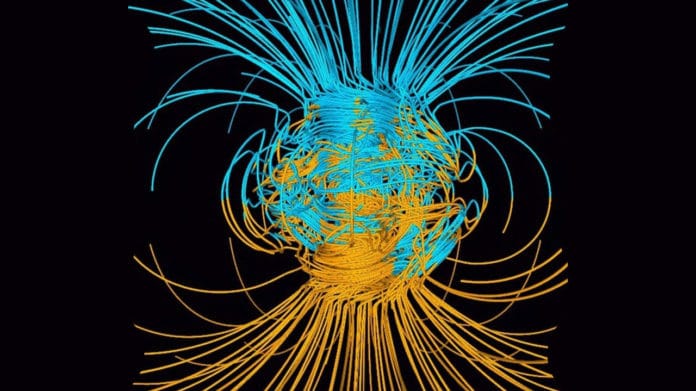The Earth’s core is made generally of iron, with the internal core being solid and the outer core being liquid. The viability of the iron in transferring heat through conduction – known as thermal conductivity – is vital to deciding various center attributes, including when the inner core formed.
Over the years, estimates for core age and conductivity have gone from very old and relatively low, to very young and relatively high.
Over the years, estimates for core age and conductivity have gone from very old and relatively low, to very young and relatively high.
In a new study, scientists have improved the estimate of our planet’s solid inner core age.
For the study, scientists created conditions similar to the center of the Earth inside a laboratory chamber. Their experiments revealed the estimate of our planet’s solid inner core, putting it at 1 billion to 1.3 billion years old.
The experiments and accompanying hypotheses help pin down the magnitude of how the core conducts heat, and the energy sources that power the planet’s geodynamo. This system sustains the Earth’s magnetic field, which keeps compasses pointing north and helps protect life from harmful cosmic rays.
What’s more, these younger estimates have also created a paradox, where the core would have had to reach unrealistically high temperatures to maintain the geodynamo for billions of years before forming the inner core.
The new research solves that paradox by finding a solution that keeps the core’s temperature within realistic parameters. Finding that solution depended on directly measuring the conductivity of iron under core like conditions — where pressure is greater than 1 million atmospheres, and temperatures can rival those found on the surface of the sun.
Scientists accomplished these conditions by squeezing laser-heated samples of iron between two diamond anvils. It wasn’t a simple accomplishment. It took two years to get suitable results.
Co-author Youjun Zhang, an associate professor at Sichuan University in China, said, “We encountered many problems and failed several times, which made us frustrated, and we almost gave up. With the constructive comments and encouragement by professor Jung-Fu Lin, we finally worked it out after several test runs.”
The newly measured conductivity is 30% to 50% less than the young core estimate’s conductivity, and it suggests that the geodynamo was maintained by two different energy sources and mechanisms: thermal convection and compositional convection. At first, the geodynamo was maintained by thermal convection alone. Now, each mechanism plays about an equally important role.
Jung-Fu Lin, a professor at The University of Texas at Austin’s Jackson School of Geosciences, said, “This improved information on conductivity and heat transfer over time, the researchers could make a more precise estimate of the age of the inner core.”
“Once you know how much of that heat flux from the outer core to the lower mantle, you can think about when did the Earth cool sufficiently to the point that the inner core starts to crystalize.”
This revised age of the inner core could correlate with a spike in the strength of the Earth’s magnetic field, as recorded by the arrangement of magnetic materials in rocks formed around this time. Together, the evidence suggests that the inner core formation was an essential part of creating today’s robust magnetic fields.
Journal Reference:
- Youjun Zhang et al. Reconciliation of Experiments and Theory on Transport Properties of Iron and the Geodynamo. DOI: 10.1103/PhysRevLett.125.078501
